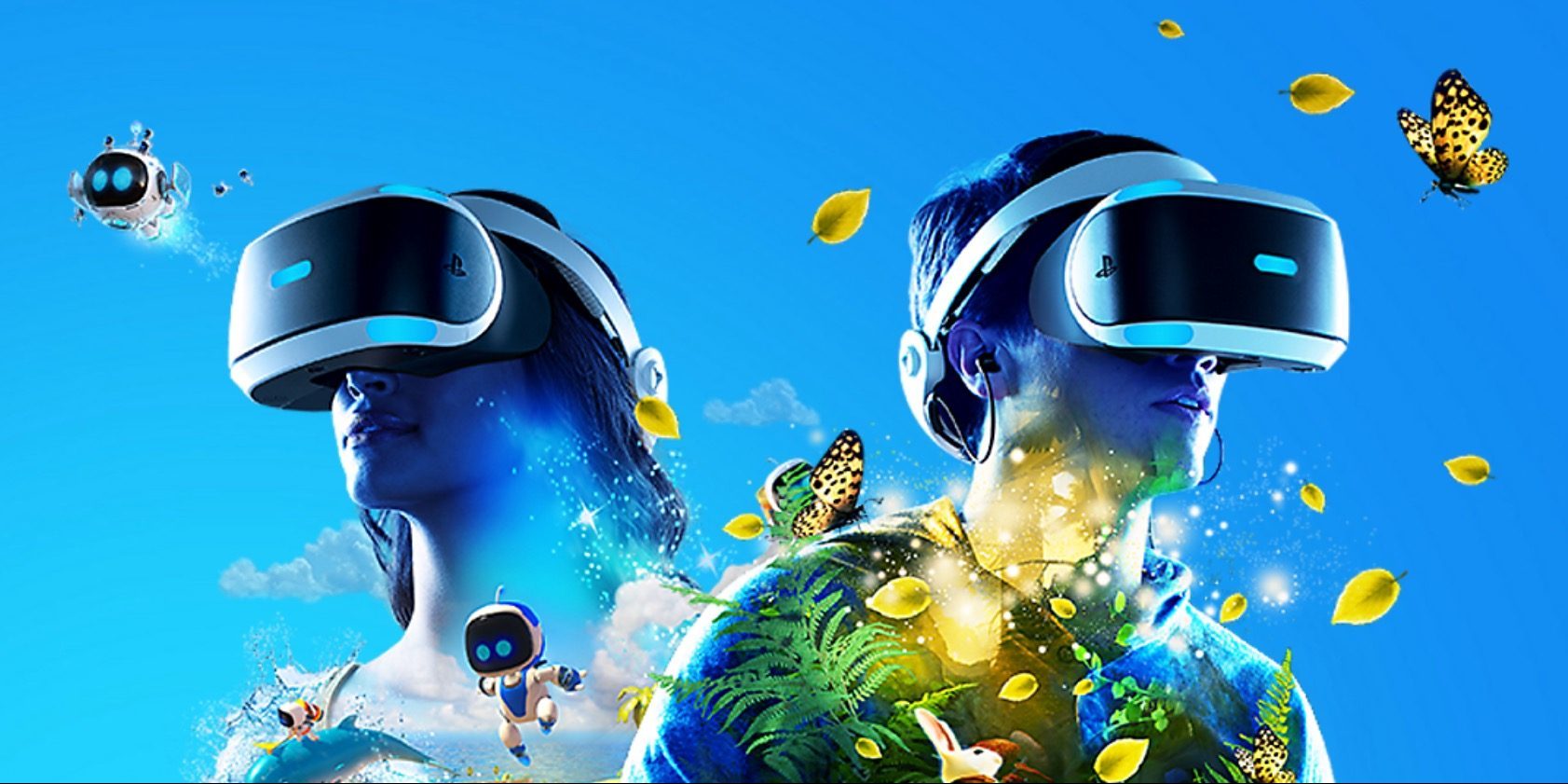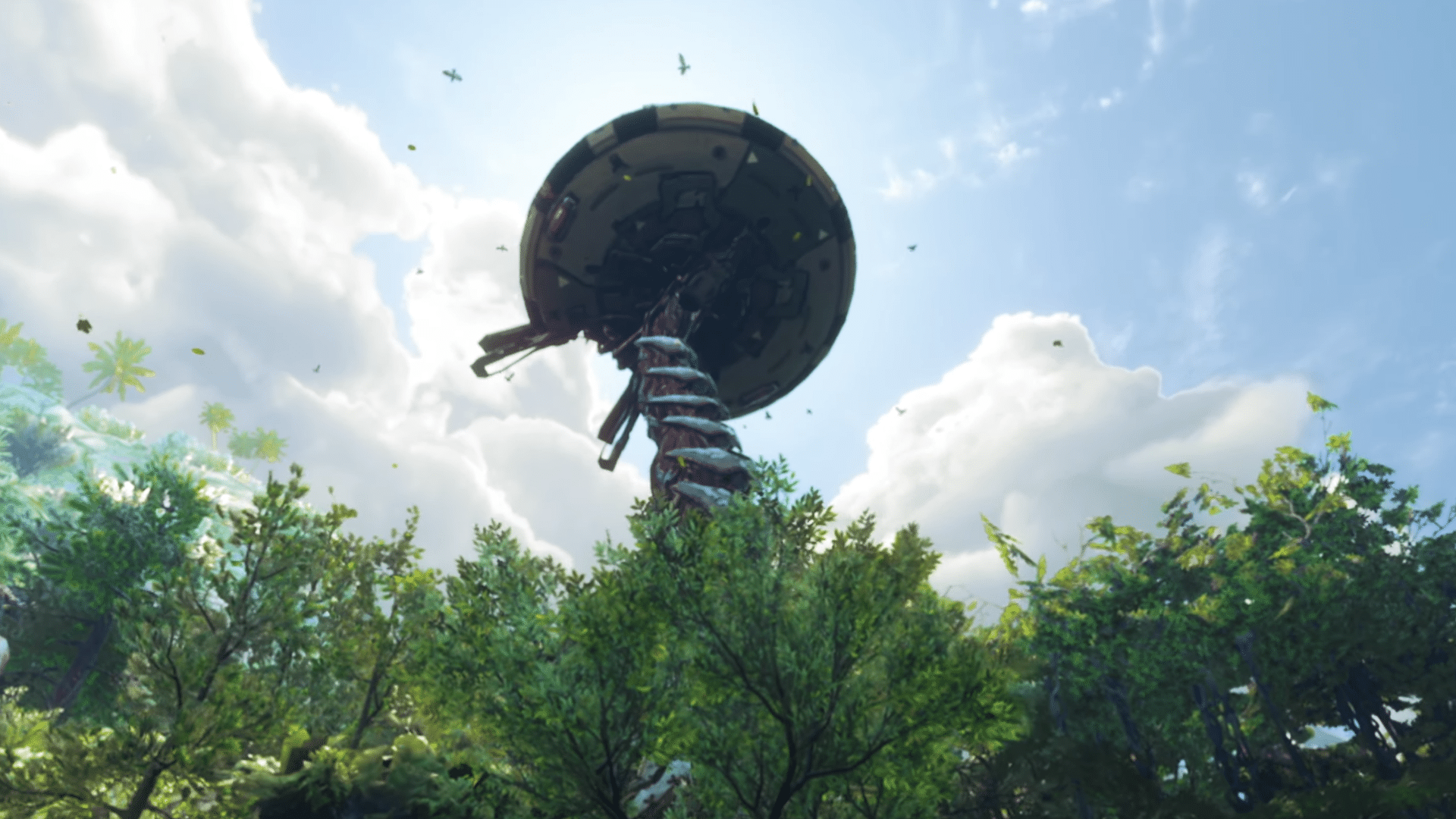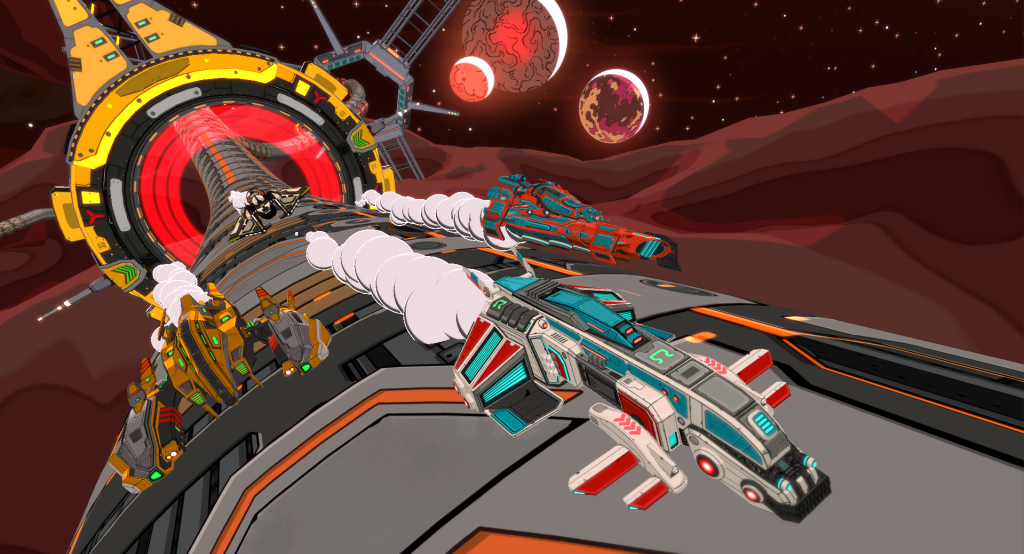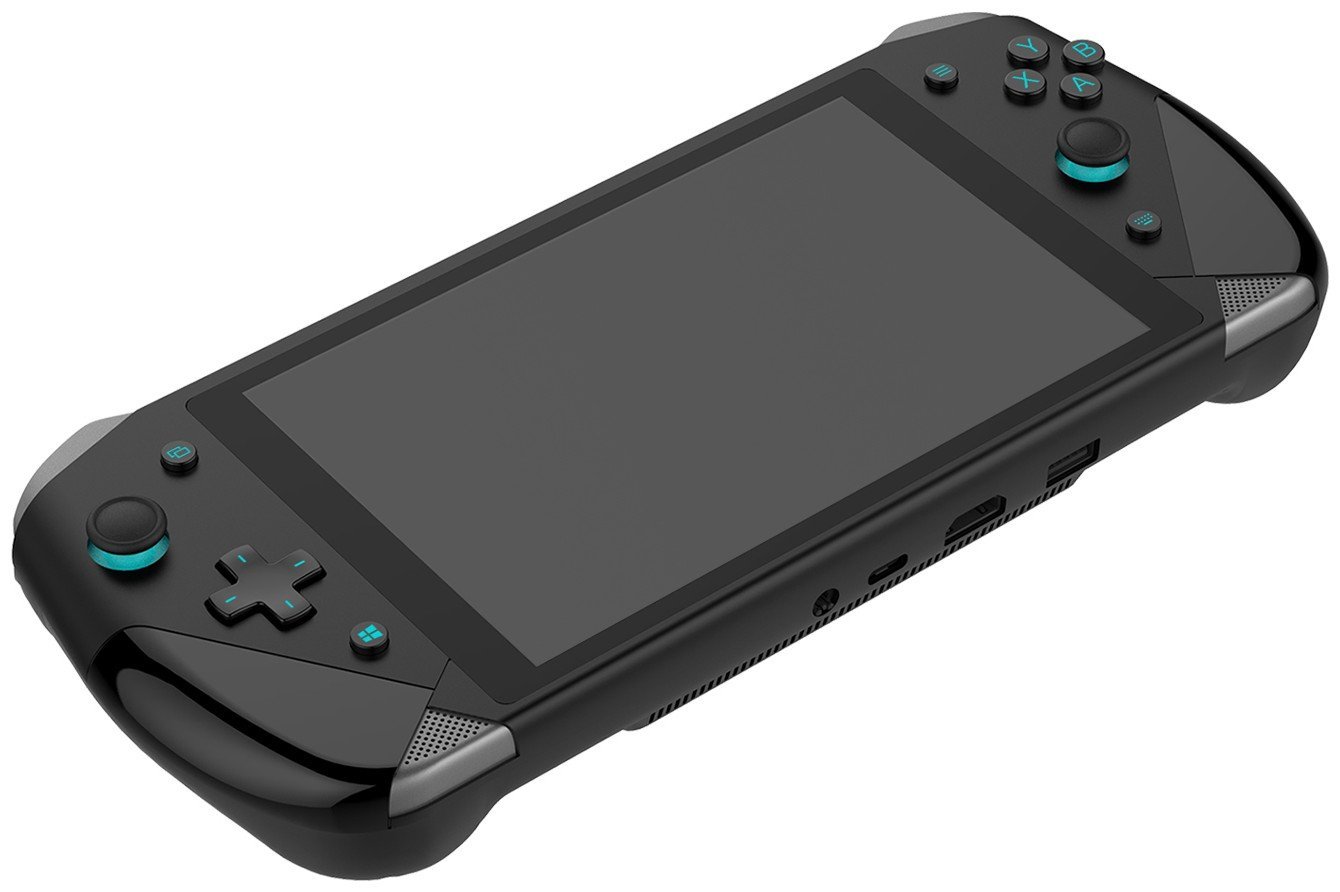Q&A: Make Real’s Sam Watts on PSVR 2 & The Future of VR
When Sony announced their continued support for Virtual Reality, confirming that their “next-generation VR system will be coming to PlayStation 5” followed by a day full of new PSVR announcements, it put a lot of minds in the games industry at ease. Some interviews with Sony’s upper management had hinted that the tech giant might have fallen out of love with VR. Now we know that’s not the case and that there’s a potential new boon on the horizon for VR developers.
When this was announced, there was one name we wanted to talk to – Sam Watts. The Immersive Partnerships Director at Make Real, a company that has been on the cutting edge of VR for years, Sam has been involved in some amazing VR projects. He was part of the team that developer Radial-G and Loco Dojo, two of our favourite VR game titles, as well as VR training/education tools for Honda, Porsche, McDonalds and many more. More than his experience though, he’s one of the most insightful and level headed minds when it comes to VR and its place in the industry.
Sam agreed to answer some of our questions and he certainly delivered some interesting answers. Here’s our Q&A in full:
Ross: I wanted to kick off with Sony’s stance and general feeling towards VR. In terms of the original headset, was it the right move to reduce its overall ‘quality’ compared to its PC competitors to appeal to an altogether more mainstream console market in terms of price? Do you think the gamble paid off in the long run?
Sam: All design, whether it be hardware or software, is about balance; balance of time, cost and quality. Comparing PS VR to the PC VR headsets that also launched in 2016 is slightly moot in that there were elements that were higher spec (refresh rate (120Hz)) or the same or lower spec (the tracking system) but with a price point that would be palatable to consumers looking to adopt.
I think this is where some of the hardware decisions factored in, such as using the existing PS Move controllers, the PS Camera and supporting tracking of the DualShock controller – these were already components available to consumers, in their hands and would help reduce perception of cost. The headlines were always the cost of the headset, ignoring the fact that at launch you needed the camera, PS Move etc on top to get the “full” experience.
Part of the perceived lower quality of the system was the lower resolution mirroring on the TV from the breakout box but as many will agree, once in the headset, the visuals were just as immersive and impressive as many of the PC VR experiences. The main sticking point for many of the gamers and devs was the tracking system and the limited playspace it afforded, when PC VR, Vive especially, was shouting about room scale and wider movement possibilities. But ultimately you have to look at what’s inside a PS4 compared to a PC and what that offers in performance or technical specification wise.
However we have to think back to something Jason Rubin at Oculus alluded to after the launch of Rift, talking about types of experiences that were popular within the library is that many games were being played seated. People didn’t necessarily want to spend hours leaping about, waving their arms around, there was plenty of opportunities for games that supported less active gameplay. (Of course Beat Saber being hugely popular and generating millions of revenue flies in the face of that statement but that’s down to mechanics.)
PS VR is the largest VR gaming marketplace currently, although Quest/Quest 2 is likely rapidly snapping at its heels now, so yes, this gamble paid off. This week we see new games titles still being announced for PS VR (following on from the recent news of PS VR 2 (name TBC) confirmed to be in development,) some of which are “exclusive” to the platform (console exclusivity these days means timed most likely).

R: PSVR is often referred to as the ‘entry point’ to VR because of this. Is that a fair statement? Other than the price were there aspects of the headset that actually made it a viable competitor in the space?
Sam: Price overall certainly was a factor, even if you tally up the cost of PS Move, the PS Camera and even a PS4 console on top to create a full VR system installation at home from scratch. Whilst today you could buy a 2016 min-spec VR PC for probably around the same (8Gb RAM, Geforce GTX 970), you’d struggle to run many of todays more demanding titles, at least at a quality performance level. Comparing a fresh PC VR setup you were looking at £1,000+ whereas it was around £700 for a full PS VR setup at the time. If you were an existing owner of a Sony PlayStation 4 (or later Pro), it was far cheaper to get into VR that way.
More important though is that it opened up the possibility of VR to a new console generation of gamers, who didn’t have or want expensive, fiddly PC setups. Whilst many games were or ended up being cross-platform releases, PS VR titles primarily focused on what worked on console; action and quick to pick up and play games.
I think the key difference however was that it was always seen by some as a peripheral, an add-on, whereas the early-adopters on PC VR were far more vocal about it being a new medium, a new platform as a whole, not just a side-distraction or optional extra, alternative way of playing games.
R: How did you find development for PSVR? Were there major scale backs or only minor tweaks? I remember thinking Radial-G looked terrific on there and was curious if you felt the experience matched that of its PC counterparts.
Sam: There are a few factors to consider when we carried out the porting effort of Radial-G : Racing Revolved from PC VR to PS VR. Firstly, we had dev kits when they were still called Morpheus and Unity integration and support was still in early stages, so there were a number of general development challenges of working with emerging technology stacks beyond anything specific with a particular piece of hardware. Secondly it was towards the earlier part of VR dev as a whole so stability and nice things like single-pass rendering and monoscopic mirroring weren’t initially available to us, heaping challenges on performance tuning and external things like marketing a good video without that dual-eye output often seen online for screenshots etc.
Over time and increases to integration stability, the main task was taking the game from Unity 4.x to Unity 5.5+ to meet the minimum (at the time) requirements of the PS VR SDK and submission process. Unity had made some major changes to things like lighting and other plugins and tools associated with how we drew the track, so there was a significant amount of effort just getting those things working but this would have been required with any version of the game moving forward at that point in time.
One also has to remember that Radial-G had a messy development life starting in 2014 for Steam initially, switching to Oculus Store for Rift Day One launch (& Steam) and then being prepared for PS VR. Had we factored in a multi-platform approach from the beginning, we would have factored the code in a way to make it more easy for ourselves to swap out components as necessary per platform, but we were a small team with a tiny budget trying to do our best with what we had at the time. We certainly learned those lessons of trying to unpick a spaghetti mess of platform support, inputs, achievements, trophies, leaderboards, SDKs etc, when porting from platform to platform, so when we started development of our follow up game Loco Dojo, knowing that we wanted it to be multi-platform from the onset, the project was laid out with this in mind.
Mostly it came down to passing comfort review and maintaining frame rate. Simply put, things were made slightly easier as we could target 60Hz, dropping down from the 90Hz on PC VR, but of course the underlying guts of the machine weren’t as powerful as the min spec VR PC at the time, so it was a case of balance and compromise to find what was stable and rock solid but also offered the best visuals and input response. Whilst the PS VR screen was lower resolution, it was more colourful and had better blacks so the game just felt nicer, and was more responsive with less fade and blur motion.
Unfortunately the biggest difference is the number of AI or other players we could realistically support and maintain performance levels required, having to drop from 16 on PC VR down to 8 on PS VR, due to CPU limitations around refreshing and maintaining that number of AI or real world pilots on screen. I don’t know whether that’s something that could be addressed with a Pro Enhancement but am sure it’s something we could support with a PS5 patch maybe.
The other biggest challenge was passing comfort review, an aspect of the submission process which felt a little subjective at the time but has since been streamlined and polished into a more objective process with associated feedback. Whereas the Oculus Store had a comfort rating assigned to titles, Radial-G of course being “intense”, comfort was something within the experience for Sony so anything that went against that for new players would be rejected or would have to be addressed to be disabled by default and only enabled with an option and a warning for those wanting more.
So we disabled things like cockpit shake and speed boost camera effects (which can be turned back on for those who want them) and worked into the geometry of each ship cockpit to reduce the amount of peripheral motion visible to all players, therefore helping reduce any potential nausea issues. It should be noted that in all the years we demoed the game at various events, mostly to people as their first experience of VR, we had very few people complain of nausea, plenty of exhilaration but we agree it’s better to be safe than sorry.

R: Onto PSVR 2. The general consensus appears to be one of surprise that Sony are even making a new headset at all. What was your initial reaction?
I think there has been a feeling that perhaps Sony had fallen out of love with VR after a few comments made by various execs over the past year erring towards the negative reflection or thoughts around where the medium is today. PS VR was driven by Shu, who had moved onto Worldwide Studios so I too wondered with a few of these choice quotes being bandied about, what the intention for a v2 was but it’s nearly 5 years since PS VR launch and the only headset that hasn’t seen a refresh or an updated version (excluding the version that shipped with the 4KTV compatible passthrough box), so I was very hopeful that something would be coming soon.
A number of people in the industry got burned by the overhype and projections made by analysts that didn’t come to fruition. A number of people though took and have maintained a reasoned, considered approach and have just kept plugging away, knowing that it will be a gradual march towards mainstream and world domination rather than an explosion. I am excited by the news that PS VR 2 has been confirmed to be in the works and seeing what the promise of a “new format for VR” means.
A number of pain points and levels of faffery have been removed by other headsets and surrounding technologies are available to boost, enhance or enable performance or features not previously possible, like streaming over WiFi, operating standalone, not needing external sensors or cameras etc. After upgrading to PS5 and getting the USB PS Camera adapter, realising that there aren’t enough ports for an external drive, camera and the breakout box gracefully (one has to go in the front – the bonus of the Pro enabling hiding all the cables round the back) and then upgrading my TV to one that supports 4K120Hz, which the PS VR box doesn’t support passthrough, the thought of having to reach around the console or TV and swap HDMI cables in and out isn’t very appealing and puts me off hopping into PS VR for a quick sesh. (Confession: I got so annoyed by this fact, I’ve actually just sold my PS VR in preparation for PS VR 2!)
R: With the announcement that the unit will again require a physical connection, albeit a far less convoluted single cable set-up, is there a missed opportunity here? Could there have been a way in your experience that PSVR 2 wouldn’t have needed to be tethered at all? Granted, I’m aware we still know very little in regards to what PSVR 2 actually is.
Sony is focused on quality, as was John Carmack at Oculus, arguing against streaming over 5GHz WiFi. Perhaps they also feel that there are too many unknowns or potential issues around individual home setups to guarantee a comfortable experience every time for every player. Anything that impacts that could be taken by the player as something wrong with the PS5 or PS VR 2 or it’s not a high quality Sony product, affecting their brand image. And let’s face it, many of us look outwards rather than inwards when there is something wrong (and then go and complain about it online).
However there are options for other VR headsets like Virtual Desktop app on Oculus Quest, that show 5GHz WiFi streaming is perfectly fine with the right conditions, even so that Facebook/Oculus has recently just allowed the feature to be included in the Oculus Quest Store version of the app, rather than having to patch it through SideQuest as before. So if Facebook are comfortable with it, perhaps others will follow?
In our enterprise work, we have created a tool called Skill Shield that uses the Quest cable to pair your device to your laptop once, and then streams over WiFi for casting the display from the headset so non-users can see what is happening. Whilst not the same as streaming dynamic content from PS5 to PS VR 2, there are ways and means. Hopefully maybe that reference for needing a single cable is related to that, pairing the PS VR 2 to the PS5 once and then it operates standalone? Perhaps it’s some smoke and mirrors messaging before the reveal of more details at a later date or whilst they are still testing the functionality? Here’s hoping.
Otherwise a single, probably USBC to the front of the PS5, like the Oculus Link cable from headset to PC, wouldn’t be so bad. The Oculus Link cable is thin, light, flexible and barely noticeable, unlike cheaper 3rd-party options.
I’m more interested in what the tracking mechanism is.
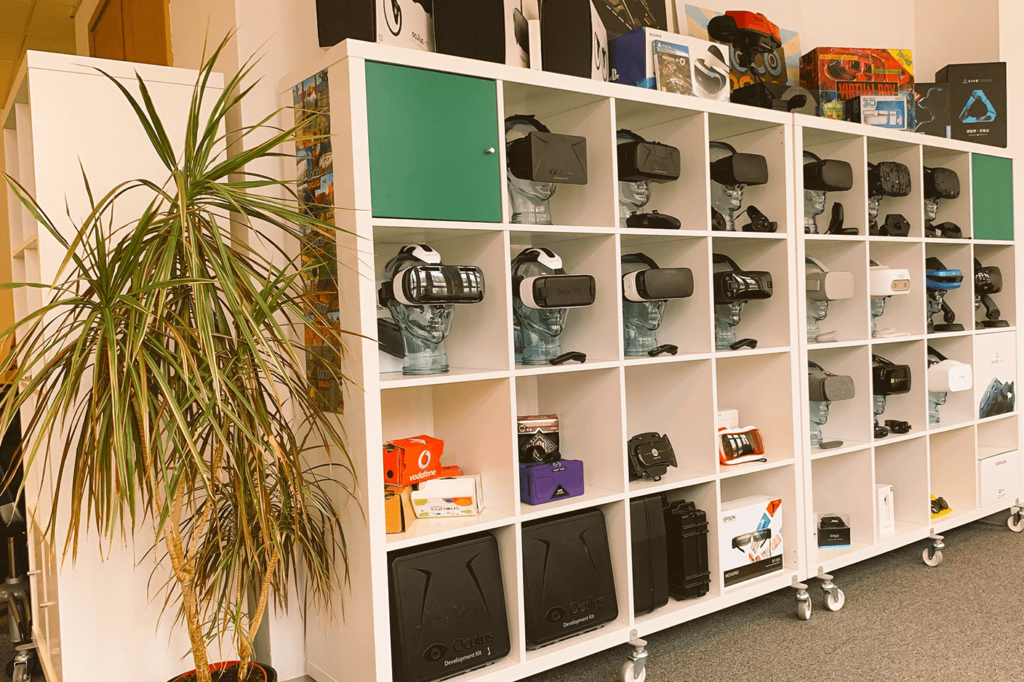
R: What’s the dream upgrades to PSVR 2 you’d like to see from a developer standpoint? Would you like to see Sony utilise the industry leading upgrades or do you think they’ll sit somewhere in the middle again?
As I opened with, it’s a balance of quality, performance and cost. When you compare to a standalone like Oculus Quest 2 with a retail price of £299, it’s going to be a tough sell to launch a PS VR 2 at that price if it needs a PS5 too (and don’t get me started on the scalper prices consoles are going for!).
All developers want is kit. Get the kit out there into developers hands so they can start working with it, experimenting and understanding limitations and then smashing through those. If you look at any console launch titles compared to those a few years down the line, the leaps in quality are huge. Radial-G was a fairly early title and compared to what’s coming out today, yeah I’m biased so think it still holds up in many areas, considering our development timelines and budgets available, there are some real advances in gameplay and new formats and genres afforded by VR.
The second thing developers want is a straightforward process for build, submission and release. Sony have done a lot of work in these areas over the past couple of years so hopefully that will continue.
Ultimately developing a game is one thing, discoverability is another. I don’t think any App Store on any platform has cracked this and so developers are often left with their titles hidden, waiting for the day the store team decides to place their game tile on the front page and those sales numbers shoot up because players can actually find it.
If we’re dreaming though, I’d like to see 4K+ screens, wireless streaming, built-in headphones over ear like the Valve Index, no halo strap (just because the original PS VR one made my massive forehead itch after a while and I have to use a VRCover PS VR velour replacement for my delicate spam) and continued accommodation for glasses wearers.
R: In your position at the forefront of VR and the meddling with the latest advancements in the field, where does VR sit in 2021? Are we on the precipice of an explosion or will the price to experience VR at its peak remain simply out of reach for a mass audience?
I think if you look at the typical chart of adoption, we are starting to leap over the chasm from early adopter to late adopter towards mainstream. But as mentioned above, it’s a gradual process, rather than an explosive one. It’s logarithmic so there will be the hockey stick moment where that chart line suddenly accelerates upwards on a much more vertical trajectory but I don’t think there will ever be A Year Of VR (as many years have gone by having been labelled as so by others…).
There’s a number of technologies around VR that are bubbling up and when they all hit the right level together, that proverbial milk pan of tech will boil over. To get into (one form of) VR, all you need now is an Oculus Quest for £299, you don’t need a PlayStation or an expensive PC but some people don’t want a Facebook device. However there is a section of gamers who, for whatever reason, simply are not interested in VR, no matter which title is available for it.
PS5s will eventually be more readily available and you will be able to buy one on impulse popping into a shop (when the shops are open again) rather than having to get very lucky hovering over a preorder online queue button or going to the dark side and supporting the despicable scalping market with overinflated prices.
VR adoption is more than just price though, there are many other factors influencing a decision to get involved. Past experience is one, many have tried VR, through early mobile VR or other devices and felt funny afterwards, making them dismiss it as a whole never to be tried again. Others have tried it in the early days of mostly tech demos and short experiences and dismissed it because it lacked depth or longevity. Or perhaps just haven’t paid attention since the earlier days (baring in mind we are now what, nearly 9 years since Palmer Luckey first launched the Oculus Rift DK1 KickStarter campaign), and don’t realise what the advances are or what 6DoF Full VR systems allow today. Perhaps with the early over-emphasis on gaming, they felt VR wasn’t for them, not realising there’s a whole range of other uses beyond just another way to blow a zombie’s head off. They are probably put off by the faff though. Since the release of consumer standalone headsets, we have seen sales take off and many developers are reporting far greater returns than with tethered devices (even though PS VR is currently still the largest marketplace). Less faff means more time spent in the headset or a higher likelihood to want to put it on again after the initial purchase rush has worn off (and therefore buy more, new experiences). But of you have to root around, plug things in, patch games, check batteries, sort out lighting yadda yadda each time you want to hop into VR, are you likely to repeatedly?
VR seems to be very polarising (although what isn’t these days) and first-time users are quick to judge that one experience they’ve had as the entirety of what is possible. It’s like watching TV for the first time but the programme as your introduction to the technology is Songs of Praise and you’re like, “What is this? TV is rubbish, I’m never going watch TV again!” But VR is like TV, it’s a whole new medium and whilst Songs of Praise many only appeal to a subset of watchers, there’s a multitude of other programmes, or experiences out there to appeal to a wide and diverse range of users. As long as they can find it.
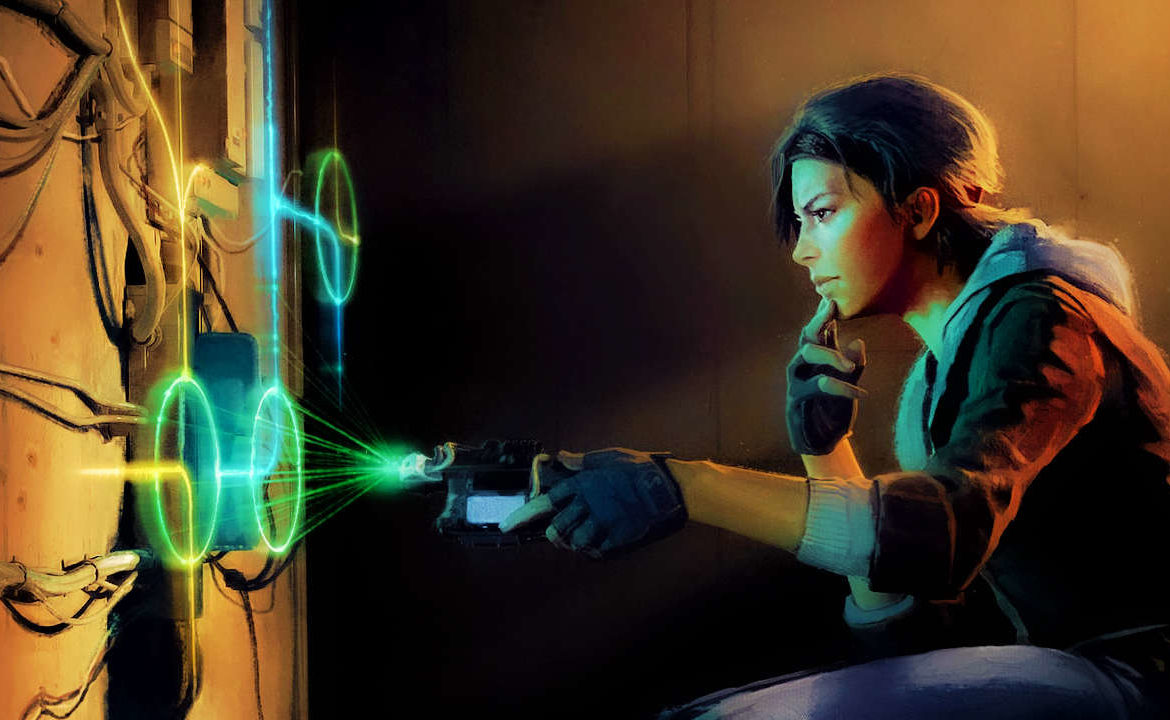
R: I wanted your opinion on an article from The Escapist from January (). It argues that a by all accounts fantastic game such as Half-Life Alyx isn’t receiving mainstream recognition, despite being locked on the most advanced tech which many argue is simply out of the price range of the average consumer. Would you agree Alyx isn’t receiving the acclaim it deserves? I certainly can’t afford to play it.
It could be said there is a general malaise in the mainstream press when it comes to VR and coverage. As said, we’re 8-9 years in now of the current wave of the technology and many of those early years were spent with a lot of hype and attention-grabbing headlines that have now come back to bite the writers or analysts providing the data. So I can appreciate the desire for more coverage ebbs and flows between editors and the readership, and measured, thoughtful responses based in reality don’t get the clicks and ad revenue (sorry FingerGuns but these are my answers!).
There is always talk of the Killer App or the System Seller and something like Half Life Alyx is that for sure. But its easier to send out a PS4 and PS VR or an Oculus Quest to a reviewer than it is a whole VR PC and Valve Index (although I believe this happened, I know Oculus did around the launch of the Rift) and if they haven’t got the hardware to review a title on, then they ain’t gonna review it! But a killer app or system seller for a console for a few hundred quid is one thing, asking someone to pay £2,000 (£1,000 for the VR PC, £1,000 for the full valve Index setup) for a ticket to ride is asking a lot. Thankfully latest Steam hardware surveys show that a greater percentage of users have a VR-ready PC already. Considering those near 9 years, going from a GTX 970 to an RTX 3090, there are a lot of more affordable options these days that many already have available.
It’s all still very chicken and egg; reviewers are less likely to have the hardware to carry out a review. Therefore fewer reviews or only VR tech aspects of the press write about it, self-fulfilling an echo chamber. But these reviews need to reach out to a wider audience but if the interest is low and the editor has to choose between an article about a new Switch title or a new VR title, am pretty sure which one will be selected.
When the mainstream press does cover VR though, you can bet the industry pays attention though. Every minor miracle is welcomed and seen as A Good Thing, overall. (Unless of course it’s a “VR is dead!” type article). But here’s where media editors can work with the industry and help solve the most common mistake of any mainstream press coverage of VR – get the cover photo right! Make sure the person is wearing the headset the article is about, not just the first image grabbed of Getty of someone wearing a cheap, plastic mobile VR headset, hands outstretched grabbing thin air. Or if it’s about AR, don’t call it VR. These kinds of subconscious images keep perpetuating the thoughts that VR is crap.
R: I’ve loved nearly every experience I’ve had in VR (barring the Call of Duty ‘experience’ I live to forget) and selling it to people seems fairly easy once they’ve had a chance to try it for themselves. Do you think there’s an uphill struggle to sell VR before trying it? Particularly in lockdown times where public events aren’t available to attend.
Absolutely. I can spend hours on stage talking about VR and perhaps 10% of the audience will be convinced (maybe that’s more down to my delivery, who knows) but stick someone in a headset for two minutes and they get it straight away. And most come away converted. As mentioned above though, more people have tried VR now, or some form of it, and some of them have had a bad experience as their first experience so convincing them to try it again now, in it’s more fledged form, can be a challenge. They soon change their negative perception though when they do though.
During lockdown it has been a massive challenge to create adopters of VR, in some regards, since as mentioned, we can’t do physical, face-to-face events, we can’t do demos, people can’t try it in shops (although this was always thin on the ground as an option anyway which needs addressing) and a flat video just doesn’t really sell it as well. Thankfully advances in Mixed Reality and composited videos merging the user into the game world makes it clearer to the viewer whats going on and gives more of a taste of what it’s like to be in it but yes, overall the proof really is in the virtual pudding.
As I keep harping on about, adoption will come gradually as the technology itself and around it improves over the coming years. Another barrier is people still think it looks goofy, because it does still look goofy. The headsets are still big and bulky but thankfully starting to be available in other colours than tech nerd boy black. Thats the final hurdle, deciding you don’t care about looking goofy because it’s what’s going on inside the headset that matters.
In other areas, adoption has actually been boosted by lockdown as people look for other ways to connect with friends, family and even coworkers, using VR for social gaming, meet-ups, shared experiences, meetings and other collaborative experiences, again, mostly through other lower cost standalone devices like Oculus Quest 2.
R: What’s the one advancement in VR you can share with us that’s a ‘killer-app’? What gets you the most excited about the future of the industry?
I don’t think that one thing is here yet but we can smell, get a sniff, a soupçon of whats coming down the line soon and that’s streaming. Once that delivery mechanism is sorted, whether it be over WiFi, tethered (not by cable!) to a 5G phone, connected to remote-rendering cloud nodes, we won’t care what the headset is attached to, or what the mobile chipset inside is, because it won’t need to be or have one that sucks up battery or overheats or other bulk housing electronic components we won’t need anymore etc. Virtual Desktop allows it (although you still need the PC to be located nearby ideally), new services are starting to show the potential and 5G is also slowly widening adoption (especially once we’ve all gotten the Bill Gates vaccination! /joke). And if we’re streaming all that data to headsets back and forth at high speed throughout the cloud across the globe, then we can start thinking about experiences a bit more like The Oasis in Ready Player One with millions of players online together at once in the same shard instance.
R: Finally, if Sony are smart they’d be knocking down Valve’s doors with piles of cash to get Alyx on PSVR 2. Do you think it’s likely?
Well, Valve already have piles of cash thanks to Steam, so I don’t think that would necessarily persuade them. Half Life Alyx is their flagship Valve Index / SteamVR title so they might want to keep it that way a little bit longer. But they are working on other VR titles so maybe once The Next One is out, they will relinquish exclusivity. I guess the main question is whether or not whatever the controllers for PS VR 2 are capable of, will they have touch-sensitive areas like Valve Index (Knuckles) controllers, will they track fast enough or have enough buttons or will they be a banana? (Reference to recent Sony controller patent showing an image of Sony Cross/Circle/Triangle/Square being augmented over an actual banana). Half-Life eventually went multi-platform so there is hope at least…
If you enjoyed this article or any more of our content, please consider our Patreon.
Make sure to follow Finger Guns on our social channels –Twitter, Facebook, Twitch, Spotify or Apple Podcasts – to keep up to date on our news, reviews and features.
